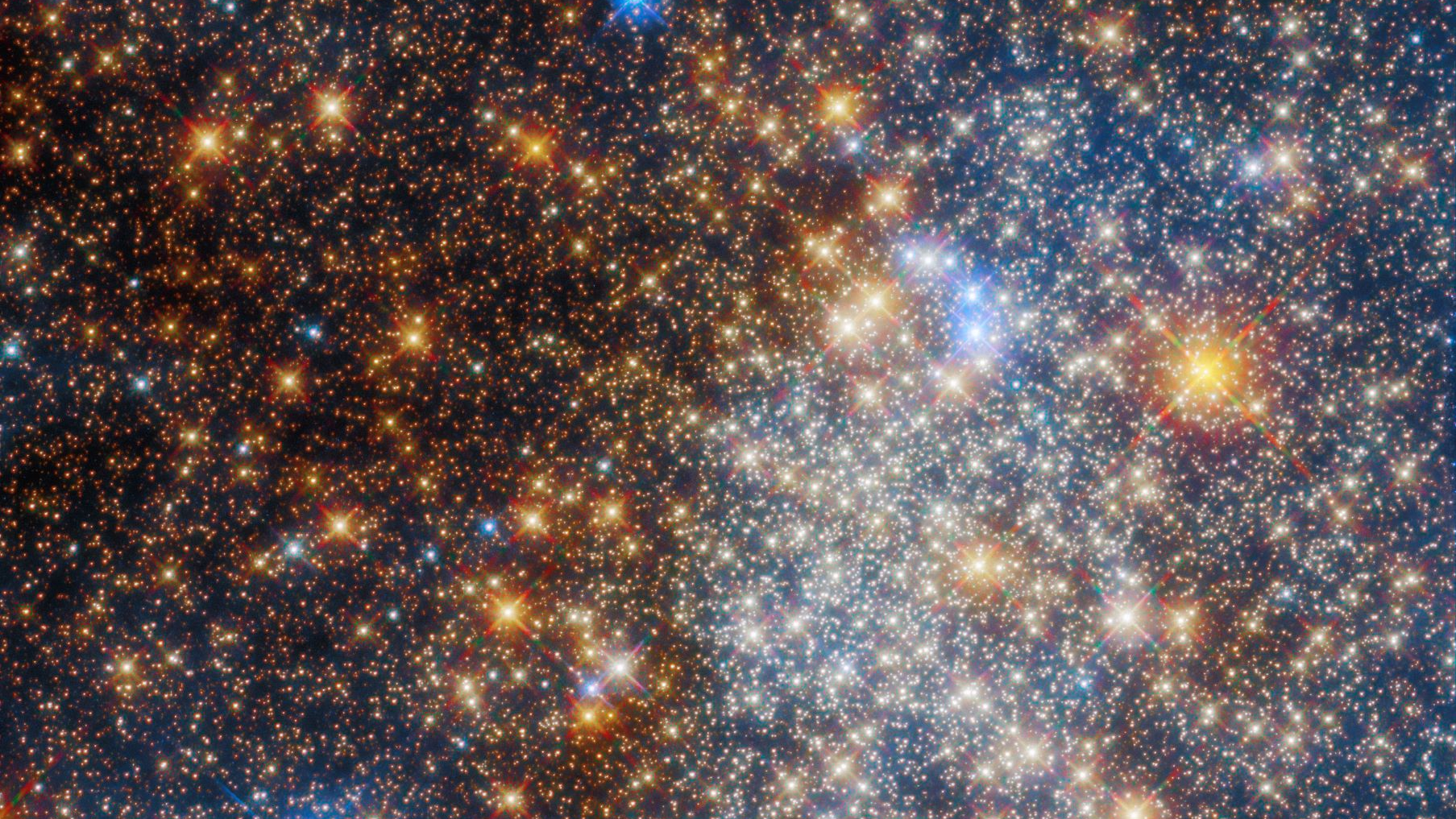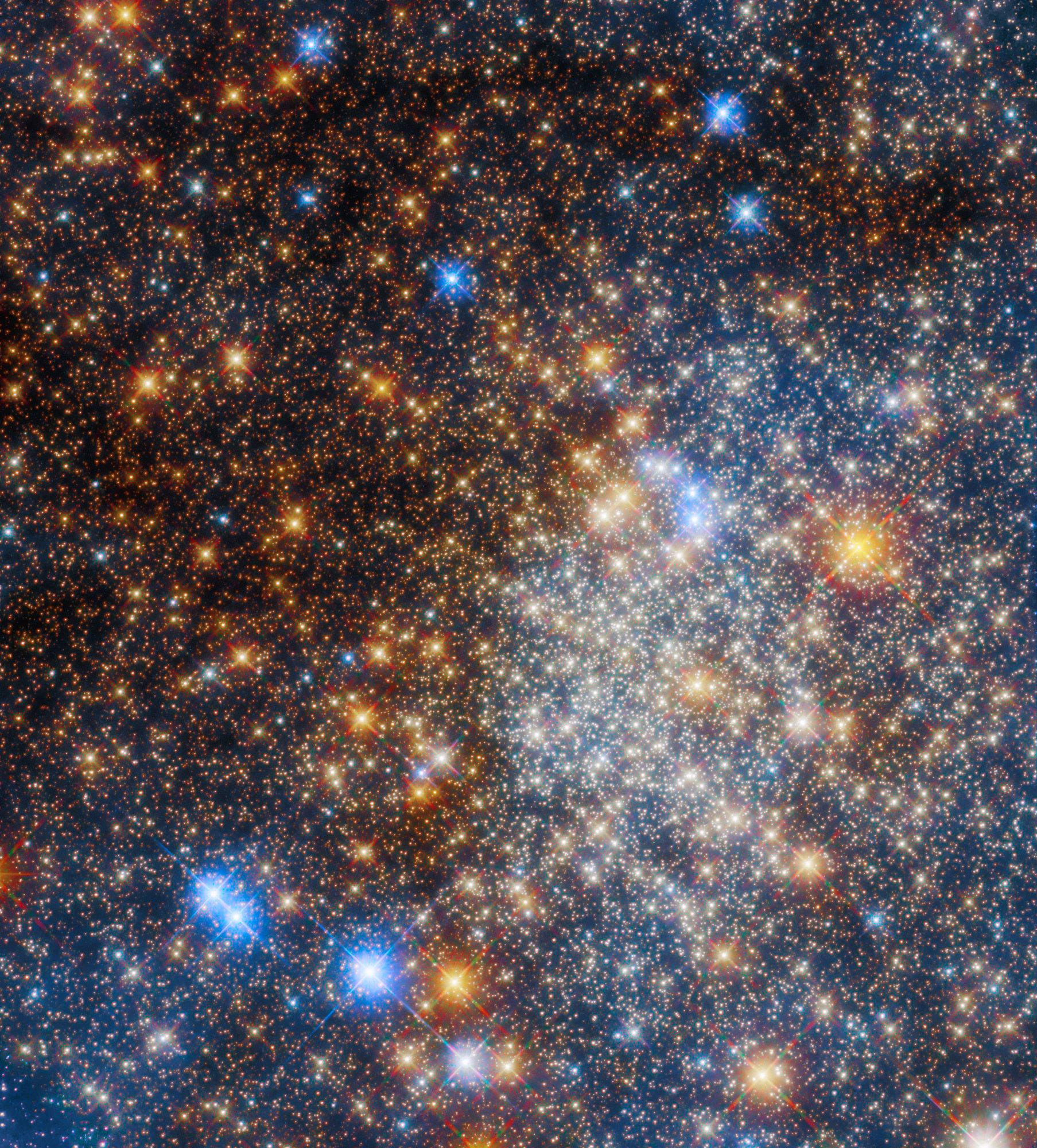Globular cluster glitters in stunning new Hubble telescope photo
A globular cluster glitters with starlight in a new photo from the Hubble Space Telescope.

A globular cluster glitters with starlight in a new photo from the Hubble Space Telescope.
Located 15,000 light-years from Earth, the globular cluster — formally known as Terzan 12 — is nestled deep in our Milky Way galaxy, in the constellation of Sagittarius. A globular cluster contains hundreds of thousands to millions of stars tightly bound together by gravity, causing the large structures to appear spherical when viewed from Earth.
Hubble, a joint mission of NASA and the European Space Agency, snapped a new view of Terzan 12 shrouded in gas and dust, which absorb and alter the starlight emanating from the globular cluster. A higher concentration of stars can be seen near the center of Terzan 12. This densely-packed group shines extra bright in the new Hubble photo.
Related: Mysterious globular clusters could unlock the secrets of galaxy formation
"The Milky Way has about 150 ancient globular clusters at its outskirts," NASA officials said in a statement. "These clusters orbit around the galactic center, but far above and below the pancake-flat plane of our galaxy, like bees buzzing around a hive."
In the new Hubble photo, the interstellar dust particles scatter blue light, causing only the redder wavelengths from the cluster to come through to our view. The brightest red stars in the photo are massive, aging giants several times larger than the sun. The bright blue stars in the photo are not part of the cluster; they're located in the foreground of the image, unobscured by interstellar material.
Hubble photographed Terzan 12 as part of an initiative to investigate the globular clusters located toward the center of our galaxy, where, compared to the outer halo of the Milky Way, there are relatively few, according to the NASA statement.
Breaking space news, the latest updates on rocket launches, skywatching events and more!
Using Hubble's Advanced Camera for Surveys and Wide-Field Camera 3, astronomers were able to study the relationship between age and composition of the galaxy's innermost globular clusters, compared to those scattered throughout the Milky Way. NASA shared the glittering photo of Terzan 12 on Sept. 7.

Samantha Mathewson joined Space.com as an intern in the summer of 2016. She received a B.A. in Journalism and Environmental Science at the University of New Haven, in Connecticut. Previously, her work has been published in Nature World News. When not writing or reading about science, Samantha enjoys traveling to new places and taking photos! You can follow her on Twitter @Sam_Ashley13.

